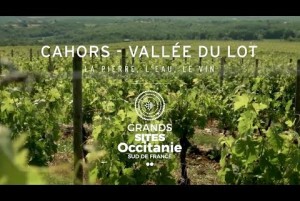Cahors in modern times
After the French Revolution, Cahors became the préfecture of the Lot department, a rural area little marked by large-scale industry. As the administrative centre, the city implemented a survey plan, built a pumping station water to supply drinking water to the town, created the tree-lined boulevards and walks, along which recreational , government and educational buildings sprang up, notably the Italian theatre (1835), the library (1907), the City Hall (1847), the Palace of Justice (1865), the Girls High School (1889) and many others. The railway reached Cahors in 1869 to connect the city to the Paris-Agen line and a new station was built in 1884 to serve the new Cahors-Montauban line, which justified the building of an imposing iron railway bridge over the Lot using new techniques in metal construction.
Léon Gambetta, the grand-son of Italian immigrants from Genoa, was one of the grandest characters in French political life in the second half of the century. He was a lawyer, Paris deputé and President of the Council. He was a fierce Republican, opposed to the Second Empire, and after the war of 1870 to 1871 was one of the founders of the Third Republic. A monumental bronze statue commemorates this great man of Cahors.
The 1914-1918 war caused a huge loss of young life. During World War II, the Lot and the town of Cahors in particular was the scene of much Resistance activity such as that of Chapou Jacques, assistant professor of letters in the boys high school (now the college Gambetta) after whom the cathedral square is now named. Several memorials commemorating the sacrifice of the soldiers of the wars of 1870, 1914-1918, 1939-1945 and the wars of decolonization can be seen in the town.
The heritage of the twentieth century is well represented in Cahors: you can see a series of homes in the style of the Belle Epoque scattered around the city and hundreds of buildings built between the wars along roads like the avenue Henri-Martin and rue Victor-Hugo.
Today a city of 20,000 inhabitants, Cahors demonstrates all the advantages of a community on a human scale: the labels “City of Art and History”, “Grand Sites of the Midi-Pyrenees”, the dynamism of its wine and cuisine, the variety and the quality of its festivals and its leisure facilities, the professionalism of its tourism industry, not to mention a huge project to restore its old buildings, all contribute to making Cahors an absolutely first-class tourist destination.
Mairie de Cahors (Town hall)
Heritage of the Midi Pyrénées

